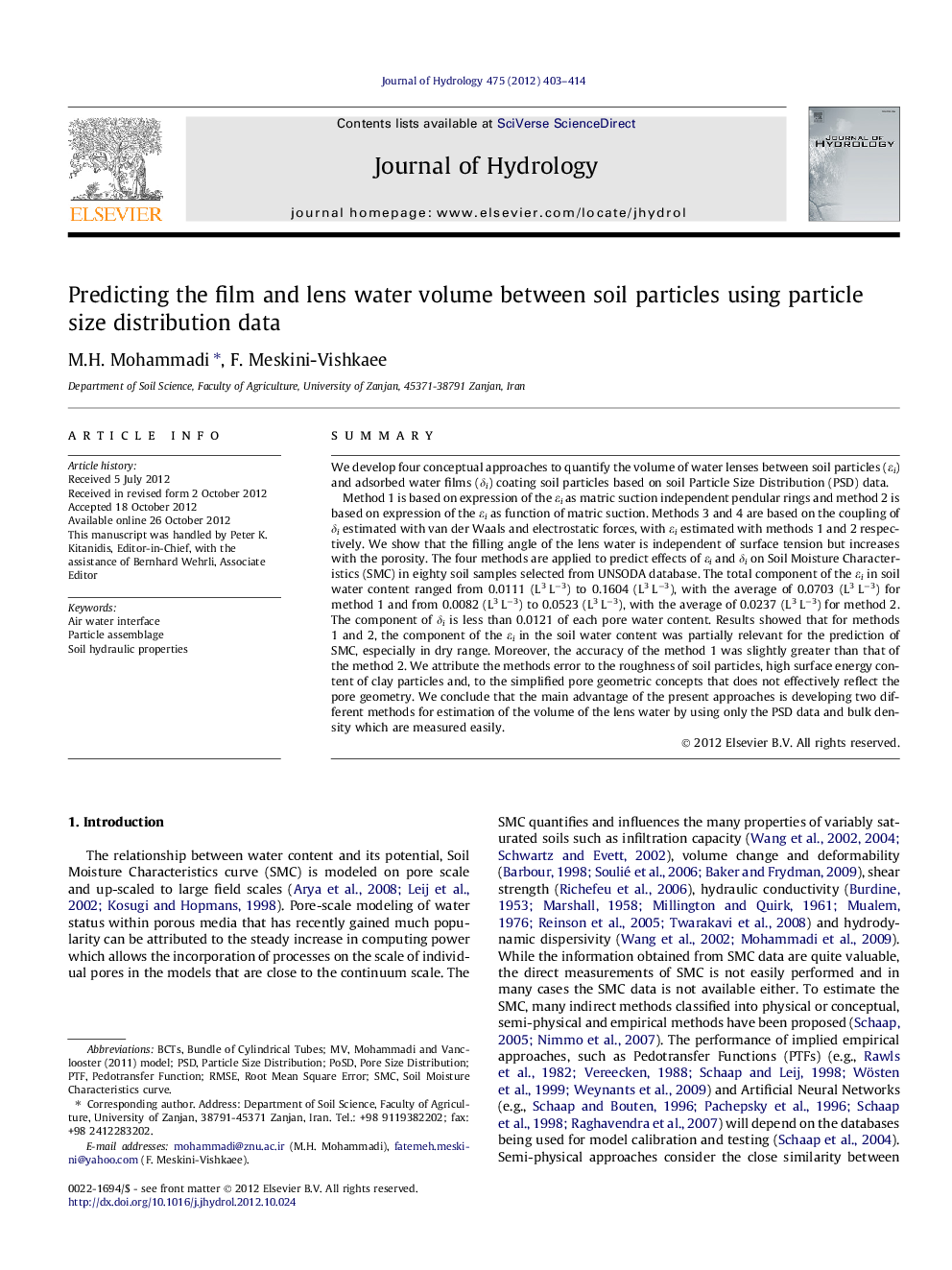| کد مقاله | کد نشریه | سال انتشار | مقاله انگلیسی | نسخه تمام متن |
|---|---|---|---|---|
| 4576672 | 1629973 | 2012 | 12 صفحه PDF | دانلود رایگان |

SummaryWe develop four conceptual approaches to quantify the volume of water lenses between soil particles (εi) and adsorbed water films (δi) coating soil particles based on soil Particle Size Distribution (PSD) data.Method 1 is based on expression of the εi as matric suction independent pendular rings and method 2 is based on expression of the εi as function of matric suction. Methods 3 and 4 are based on the coupling of δi estimated with van der Waals and electrostatic forces, with εi estimated with methods 1 and 2 respectively. We show that the filling angle of the lens water is independent of surface tension but increases with the porosity. The four methods are applied to predict effects of εi and δi on Soil Moisture Characteristics (SMC) in eighty soil samples selected from UNSODA database. The total component of the εi in soil water content ranged from 0.0111 (L3 L−3) to 0.1604 (L3 L−3), with the average of 0.0703 (L3 L−3) for method 1 and from 0.0082 (L3 L−3) to 0.0523 (L3 L−3), with the average of 0.0237 (L3 L−3) for method 2. The component of δi is less than 0.0121 of each pore water content. Results showed that for methods 1 and 2, the component of the εi in the soil water content was partially relevant for the prediction of SMC, especially in dry range. Moreover, the accuracy of the method 1 was slightly greater than that of the method 2. We attribute the methods error to the roughness of soil particles, high surface energy content of clay particles and, to the simplified pore geometric concepts that does not effectively reflect the pore geometry. We conclude that the main advantage of the present approaches is developing two different methods for estimation of the volume of the lens water by using only the PSD data and bulk density which are measured easily.
Figure optionsDownload as PowerPoint slideHighlights
► Conceptual model illustrating the liquid bridge volume using PSD data.
► Max lens water content varies slightly with porosity.
► We estimate εi and δi using PSD and bulk density data without empirical coefficient.
► This approach calculated the lens water with a simple physical model sequentially.
Journal: Journal of Hydrology - Volume 475, 19 December 2012, Pages 403–414